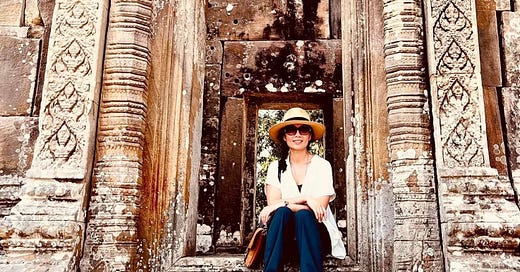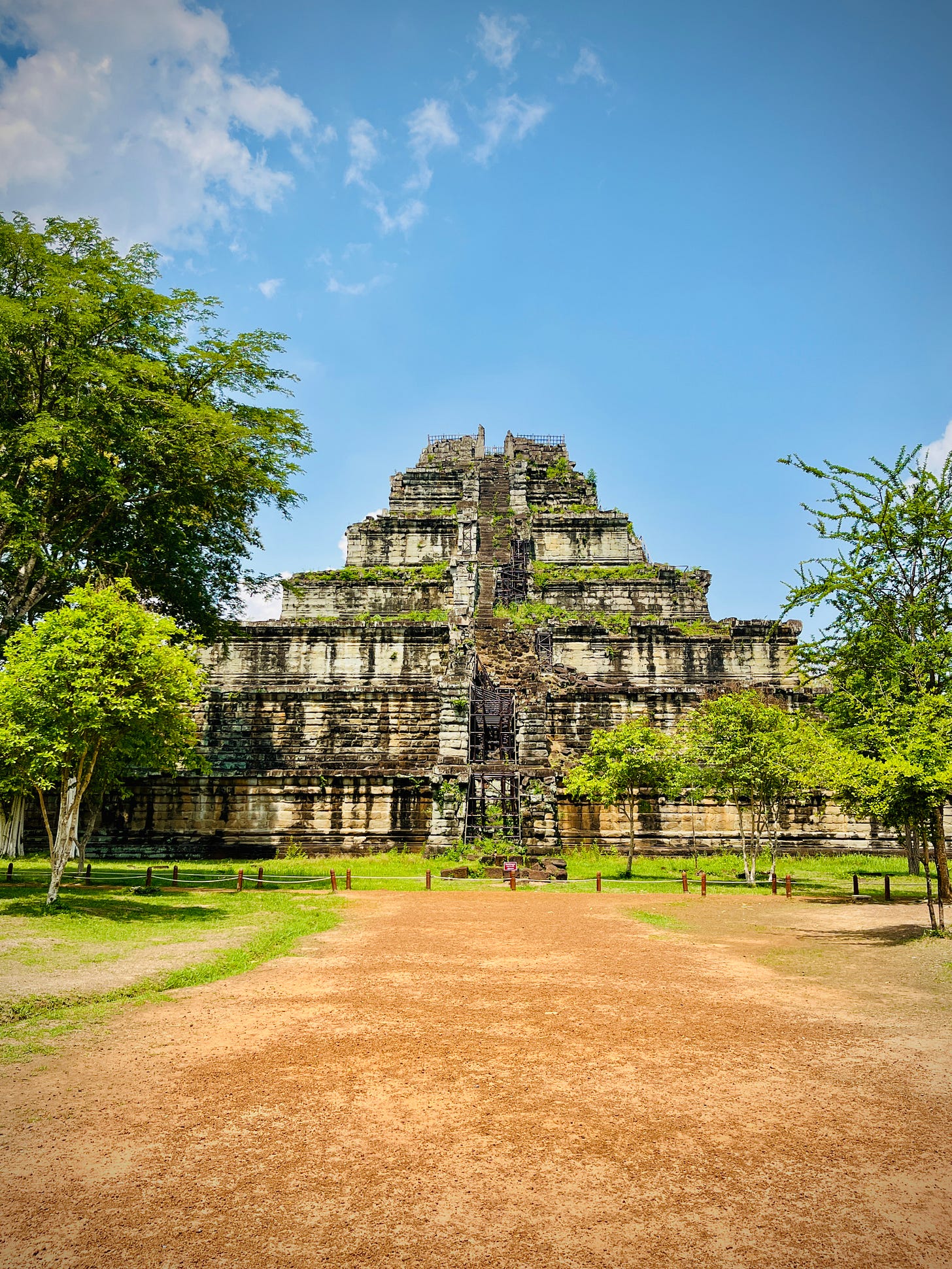Hello adventurers,
I’ve been deep in the heart of Cambodia, chasing the echoes of the ancient Khmer Empire—and what an unforgettable journey it’s been.
Into the Temples of Time
There’s nothing quite like your first visit to the Angkor Archaeological Park. Wandering through ancient stone corridors and crumbling towers, it’s easy to feel like you’ve stepped into another world—one where gods walked among kings, and history was carved (literally) into every wall.
Khmer kings began building before the 9th century, but the most famous of the empire’s legacy, Angkor Wat, wasn’t constructed until the 12th century by King Suryavarman II. Angkor Wat is often described as having been “rediscovered” by French explorers in the 19th century, but that’s a myth rooted in colonial storytelling. In truth, the temple was never lost—Cambodian monks and locals had cared for and worshipped there for centuries. While Henri Mouhot helped introduce Angkor to the West, his writings fed into the romantic idea of a forgotten jungle city, ignoring the fact that it was always known and deeply embedded in local culture.
As the largest religious monument in the world, Angkor Wat lives up to every bit of its legendary status. Covering a staggering 162 hectares, it is four times larger than Vatican City and nearly twice the size of the Forbidden City in Beijing. With its soaring towers, perfectly aligned causeways, and intricate bas-reliefs stretching for miles, Angkor Wat shows how deeply the Khmers understood mathematics, engineering, and architecture. It’s said that the entire complex was constructed in just over 30 years—an almost unbelievable feat when you see it in person.

But here’s the thing: the Khmer Empire is so much more than Angkor Wat. Most visitors only stay a few days and barely scratch the surface. If you stay longer, you’ll start to realise that there are hundreds, possibly thousands, of temples across the region—each with its own story.
Here are three of my personal favourites…
🌿 Beng Mealea
Imagine a temple lost to time—half-consumed by jungle, with towering trees growing through ancient stone and vines draped over fallen galleries. Few visitors make it out here, so you’re often alone, with only butterflies fluttering by and birds calling from the canopy. This is Beng Mealea. Largely unrestored, it offers a true Indiana Jones-style experience: overgrown, mysterious, and hauntingly beautiful. Believed to be a prototype for Angkor Wat, it was built in the same architectural style, making it one of Cambodia’s most atmospheric ruins.
🪷 Banteay Srei
Often called the “jewel of Khmer art,” this small temple is unique for its deep red sandstone and the exquisitely detailed carvings that cover every surface. Built in the 10th century and dedicated to the Hindu god Shiva, its name means "Citadel of the Women"—possibly because the carvings are so intricate that they were said to be done by the hands of women. Despite its modest size, it’s one of the most beautiful temples I’ve ever seen. Every inch is adorned with intricate floral patterns, devatas, and scenes from ancient myths—it’s more like sculpture than architecture. Because of its scale and craftsmanship, Banteay Srei feels intimate, almost delicate, and offers a completely different atmosphere—quiet, graceful, and rich with storytelling.
🛕Koh Ker
Tucked away in the remote jungles of northern Cambodia, Prasat Thom in Koh Ker is one of the most striking and unusual temple structures in the Khmer Empire. Unlike the towering spires of Angkor, Prasat Thom rises as a seven-tiered sandstone pyramid, distinctly reminiscent of the step pyramids of Mesoamerica—particularly those in Mexico, like Chichen Itza. The resemblance is uncanny and has sparked much speculation, though it’s more a case of architectural convergence than connection. Still, standing at the base of this towering ziggurat-style monument, overgrown and largely untouched by mass tourism, you can’t help but feel the same awe and mystery that clings to ancient ruins across the world.
It’s important to remember that for decades, Cambodia was closed off to archaeological work due to war, genocide, and political unrest. But now, with peace restored and technology like LIDAR (Light Detection and Ranging) transforming how we explore, scholars are making extraordinary discoveries—reshaping everything we thought we knew about the Khmer Empire.
We’re only beginning to understand the vastness and sophistication of this ancient civilisation, and it’s thrilling to witness a new chapter of history unfolding in real time.
What I’m Reading
Not my normal read, but a classic from the 1950s that I spotted in the hotel swap library. Dog-eared and well-read, my curiosity was piqued…
Graham Greene’s The Quiet American is a quietly haunting novel (also a movie) that explores the blurred lines between morality, politics, and love in 1950s Vietnam. Seen through the jaded eyes of Fowler, a British journalist, it captures the unease of a fading empire and the unsettling rise of American idealism.
A lot of people took this book to be a sharp critique of the kind of naive optimism that would later define much of America's involvement during the Vietnam War.
It really is a classic in all regards.
Until next time—stay curious and keep seeking stories beneath the surface.
A. H. Wang
This Month’s Book Promos
Latest Instagram Posts
Come visit me on Instagram or Facebook to have a look at some of the behind-the-scenes pics and stories!
Follow
Follow me on Bookbub
Follow me on Amazon
Find me at www.ahwangauthor.com











